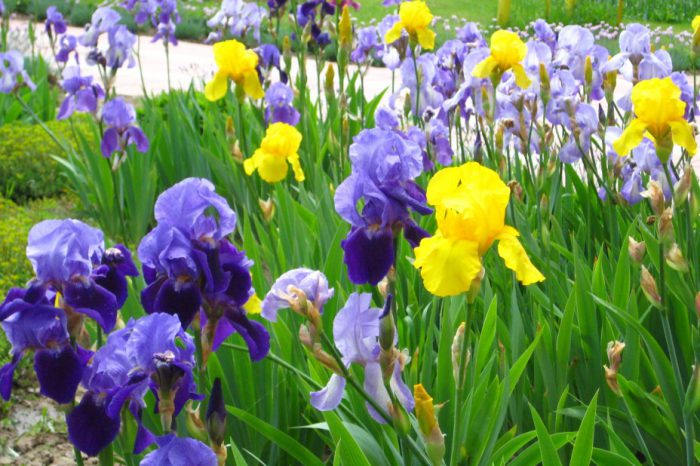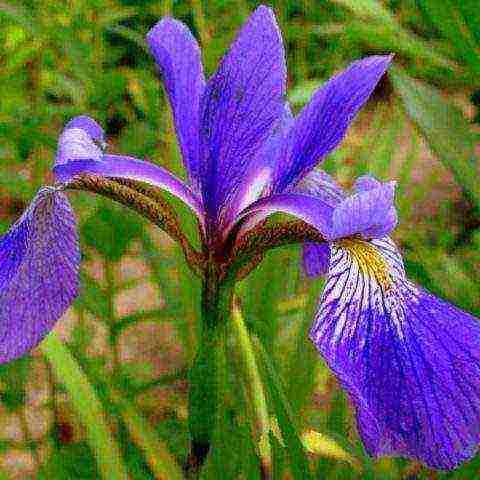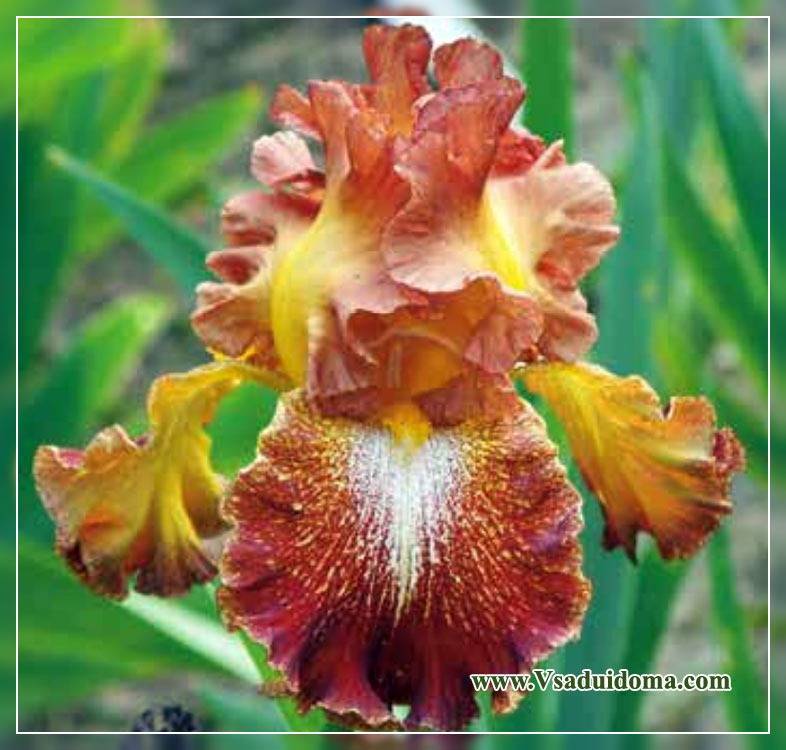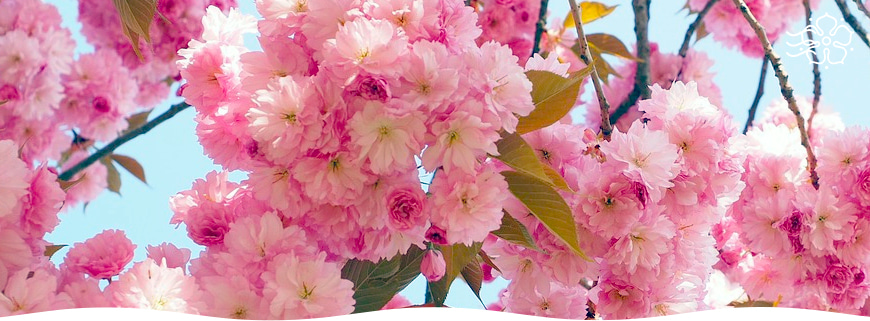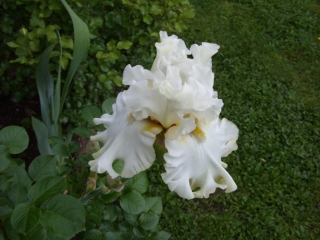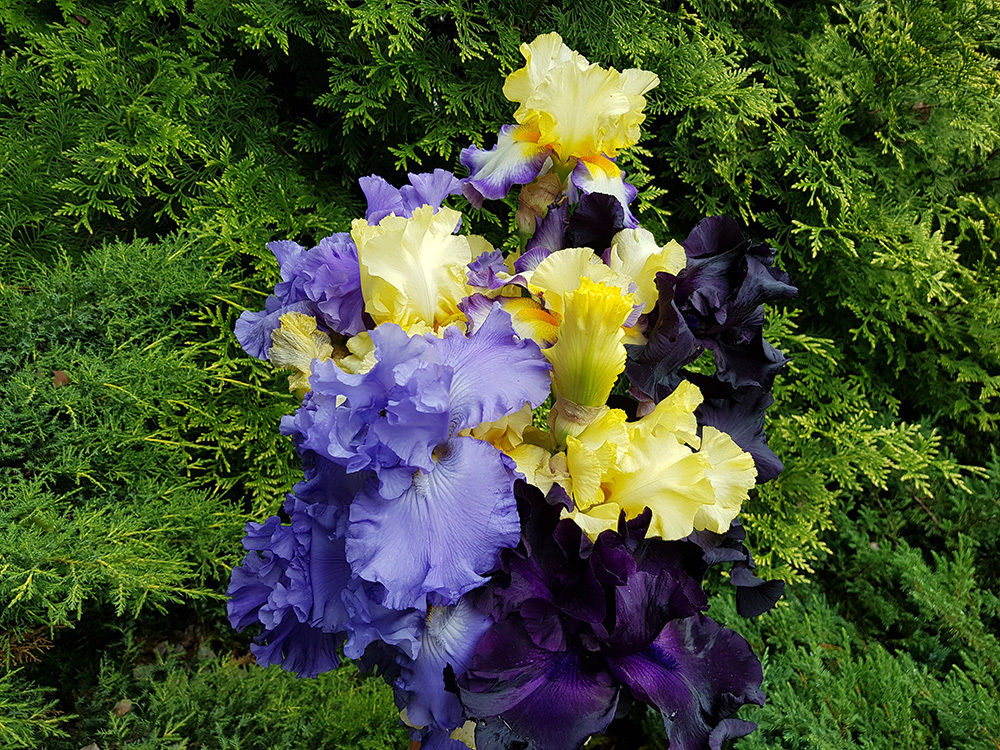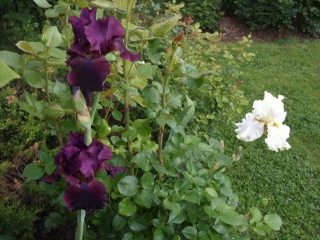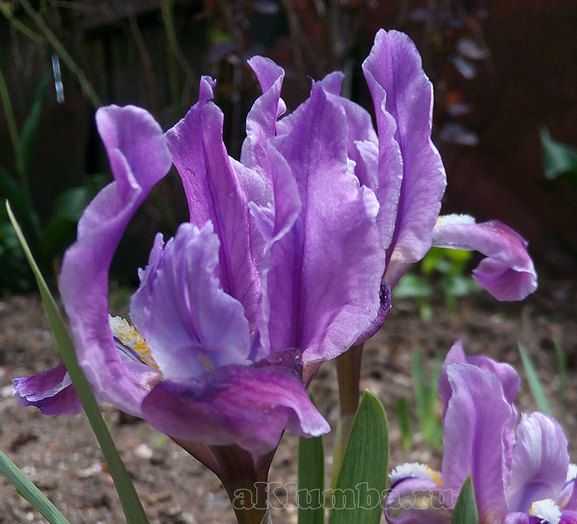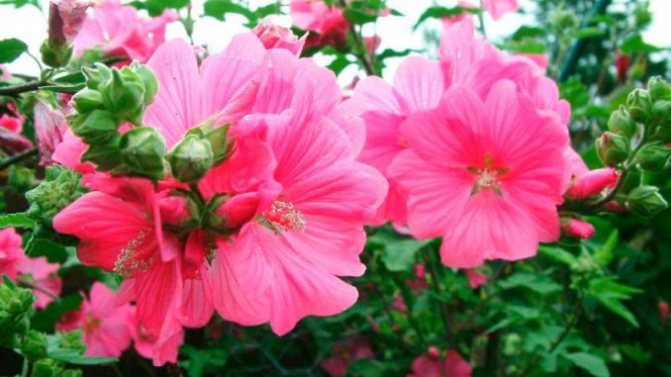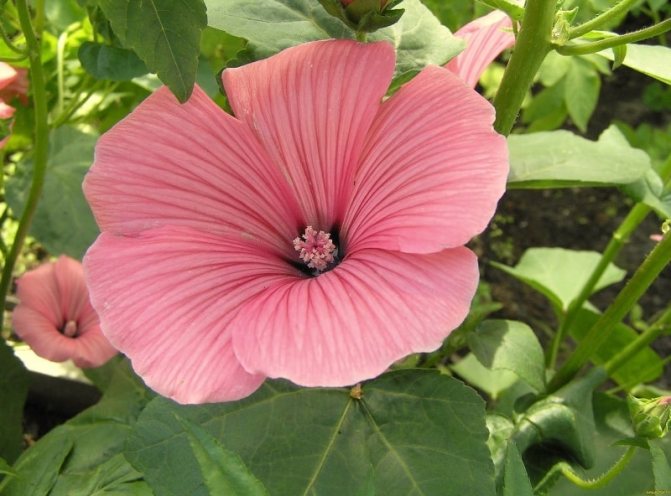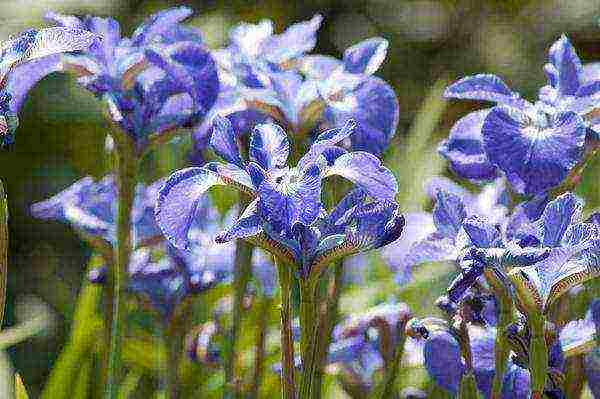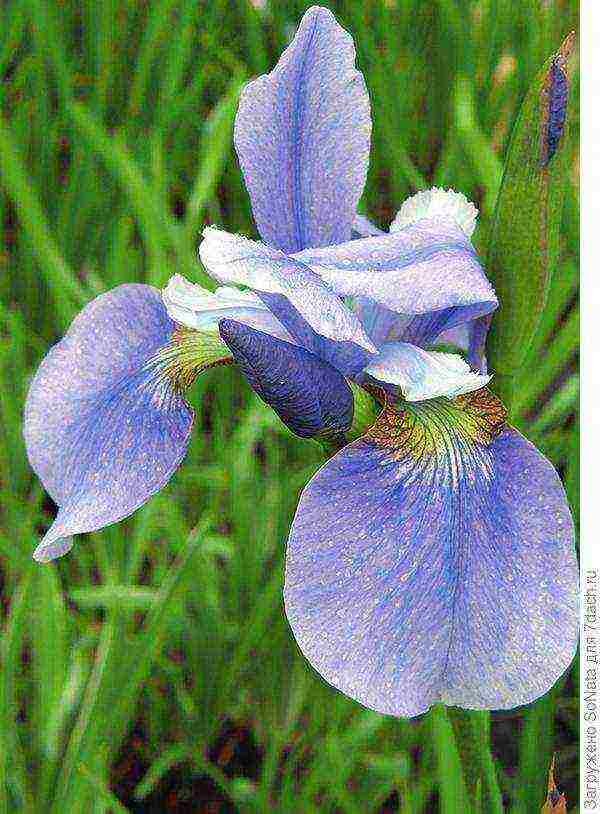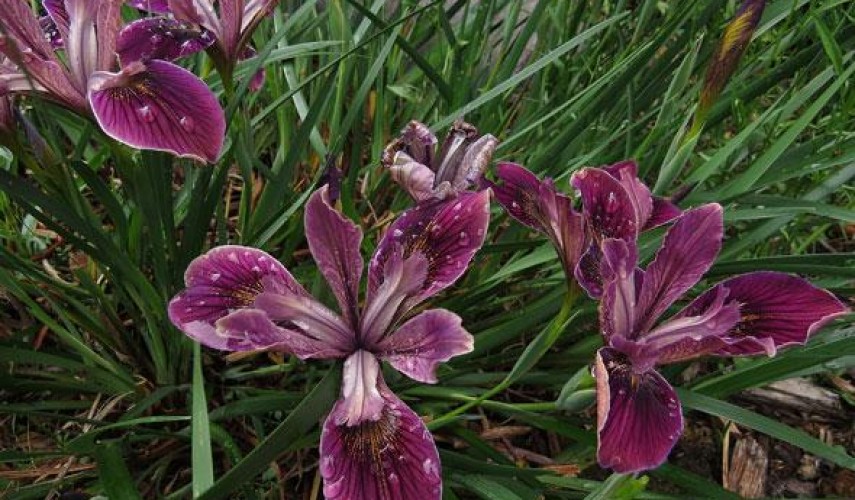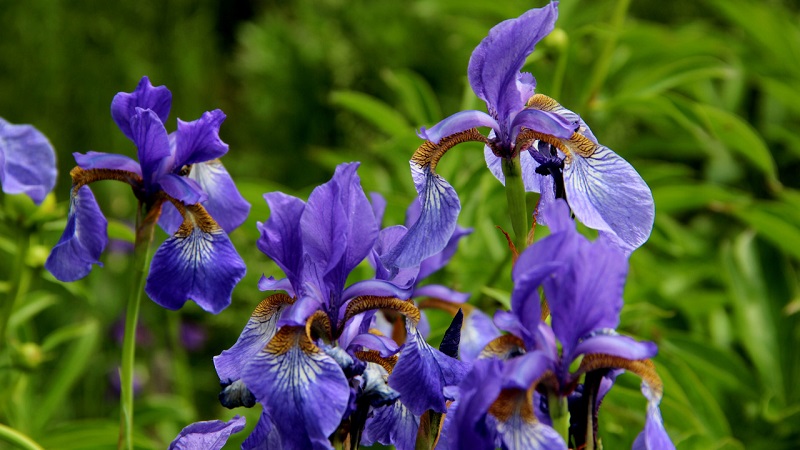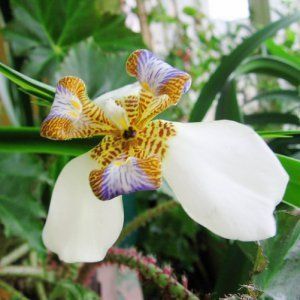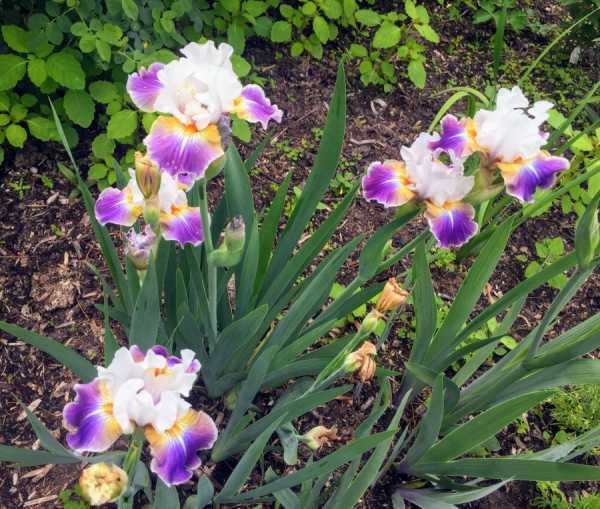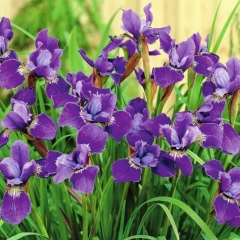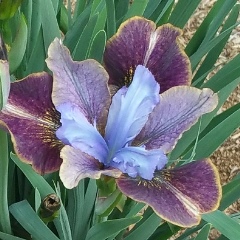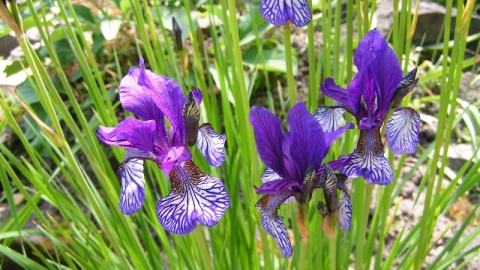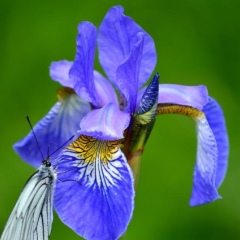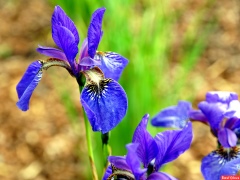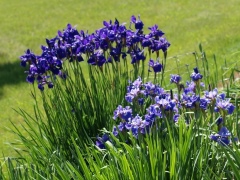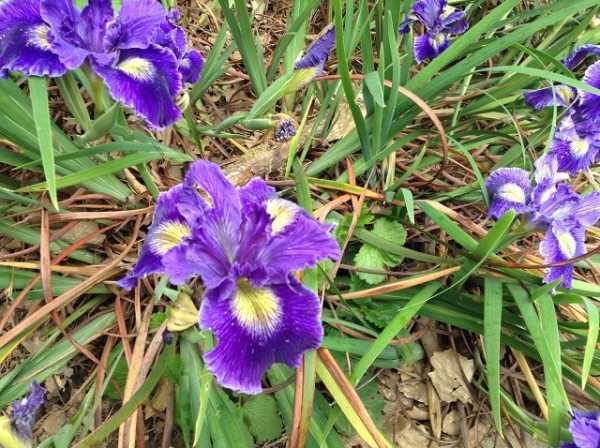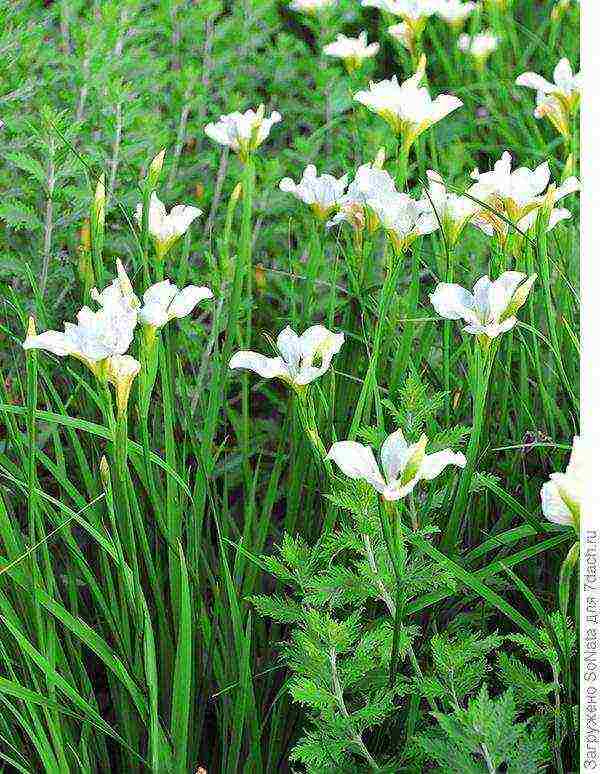Diseases and pests
 |
Bacteriosis
Ways to fight:
|
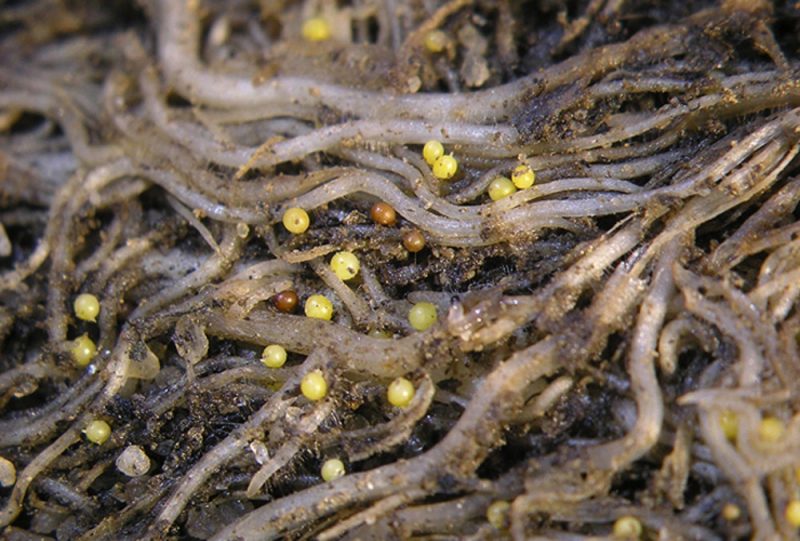 |
Nematodes Ways to fight:
|
 |
Bronze beetle
Ways to fight:
|
Double standard - cold-resistant variety
"Double standard" - iris, which is resistant to cold climatic conditions. The flowers grow bright and beautiful, with little or no maintenance. Ideal for a summer cottage if there is no way to come to it often.
"Double Standard" blooms in June - July. Flowering is represented by lush large buds of rich purple color. Each rosette of leaves contains from 5 to 7 double-type flowers, each of which has 6 to 12 petals. The base of each petal is colored bright yellow. Leaves are pointed, not wide. The plant reaches 60–70 cm in height. A distinctive feature of the flower is the complete absence of aroma.
"Double standard" - Siberian iris. The name is associated with the winter hardiness of the plant. The advantages of the view are the following:
In one place, the flower can grow up to 10 years, the transplant is carried out when the flowering becomes scarce.
Iris is able to independently extract moisture from groundwater due to its developed root system. The roots are capable of deepening to a distance of 0.5 m. "Double Standard" is also distinguished by the ability to disinfect the soil and improve its condition.
Soil and planting site
A neutral or slightly acidic soil is a better choice for irises, but an alkali or acidic medium is not for them. In an acidic environment, irises will not only not bloom their buds, but will also be attacked by various bacteria. If it has already happened that the plant is planted in such a soil, then the soil will have to be neutralized by adding chalk, ash or lime to it.
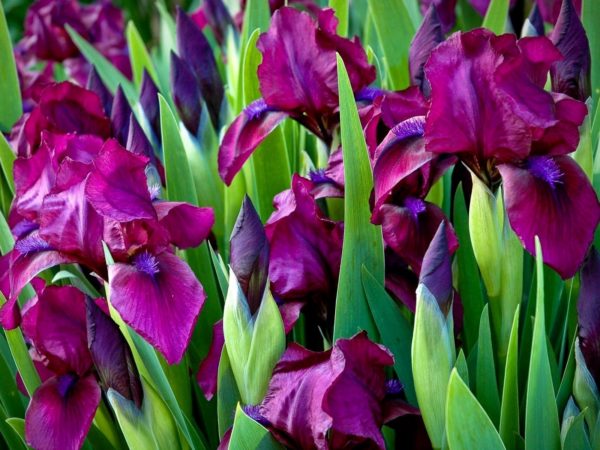
Cockerels do not like heavy soil, such soil must be mixed with compost, peat or sand. An excess of peat is also not suitable, in such a situation one cannot do without the addition of organic substances.
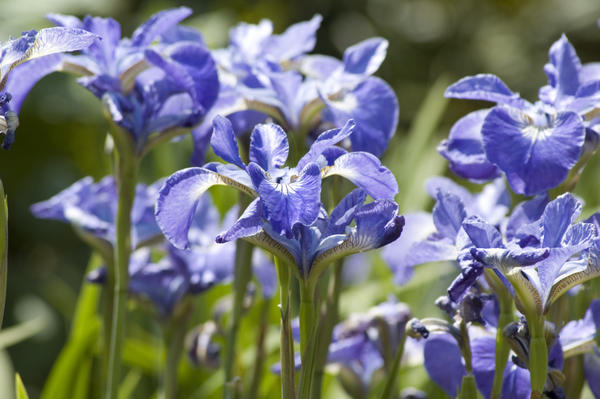 You may be interested in:
You may be interested in:
How to properly care for Siberian iris outdoors Siberian iris is a delicate and beautiful, graceful plant. It is perfect for a summer cottage flower garden, belongs to ... Read more ...
Another important point is the choice of the landing site. Males love sunshine, so the plot should not be in a dark place, since the plant will bloom weakly and not very long from the sun base.
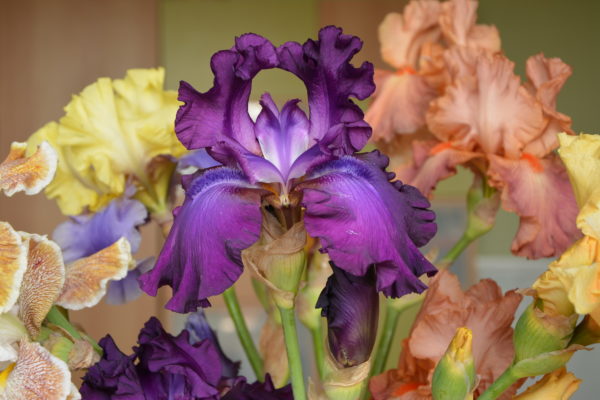
When choosing a place, it is worth considering groundwater, namely, how close they pass near the surface of the earth. If it is very close, then you need to either raise the site by at least 15-20 cm or prepare a drainage layer.
Pay attention! Irises are tall plants, so the site must be protected from the wind.
Varietal variety
The long and painstaking work of breeders has led to the emergence of a large number of varieties of Siberian iris.
Florists recommend that novice gardeners pay attention to the following types
- "Alba" is a snow-white flower, the petals of which have a lilac tint. The height of an adult plant can reach 120 cm.Flowering begins in mid-summer.
- "Butter" is a flower in which the lower petals are colored yellow and lemon, and the upper leaves are white. The height of this variety very rarely exceeds 75 cm. The opening of the buds occurs at the beginning of July.
- "Big Ben" is a variety with a purple hue. The maximum inflorescence size is 6 cm.
- Concord crush is an unusual shaggy flower with 15 petals in one inflorescence. The shade of this variety is blue with purple veins. A distinctive feature is the presence of repeated flowering. The maximum bud size is 14 cm.
- "Rigamarole" is a late species that has a terry surface of the petals. One inflorescence can consist of 20 leaves. The basic shade of the flower is pink with lavender spots. Large and wide petals with wavy edges are collected in dense buds. This variety is resistant to low temperatures.
- "Black Joker" is a new species with unusual colors. The outer petals are colored brown and edged with gold. The interior color range consists of all shades of blue and lavender. This variety has maximum resistance to all known diseases.
- Blue king is a popular plant that has a short-branched root system. On the cylindrical peduncle there are about 5 flowers, which are painted in a violet-blue hue.
- "Harpswell Hepines" is an early-late representative of the iris, the petals of which are painted white and their bases have a yellow tint. This species is distinguished by abundant and long flowering with the re-formation of buds in the fall. All petals have corrugated edges and a dense structure.
- "Ruffled Plus" is a bright lilac flower, the height of which reaches 1 meter. The leaf plates are colored dark green and form a dense rosette. The flowering period is June.
- "Swan in flight" is a snow-white flower with the base of the petals always yellow with green veins. Plant height reaches 90 cm, and the length of one flower can reach up to 14 cm. Flowering is always abundant. A distinctive feature is the presence of a gray-blue color of the leaves, which retain their decorative effect until the first frost.
The following iris varieties have no less decorative effect:
- "Cassandra";
- Barcelona;
- Sparkling Rose;
- "Anchorched";
- Snow Queen;
- Fancy Me Zis;
- Silver edge;
- Golden Edge;
- Paprikash;
- Contrast in Styles;
- Butter & Sludge.
All of the above types have a bright and unique color palette and rich shades.
Botanical description of irises: an excursion into history
Iris is an ornamental, perennial plant belonging to the Iris family. It is believed that the first flowers came to us from Asia. Under natural conditions, irises can be found in North America, in Europe.

Beautiful iris flowers captivate with their airiness and tenderness
These are the most beautiful and common flowers. They are used to decorate city parks, flowerbeds of summer cottages.
The plant has a long erect stem, elongated basal leaves, huge flowers of different colors. In addition to decorative properties, irises also have medicinal properties. They are used to treat many diseases.

Irises - flowers of the goddess Iris
Iris got its name in honor of the ancient Greek goddess of the rainbow - Iris. And the name was given to him by Hippocrates. If you believe one legend, then in those days when Prometheus distributed fire, a rainbow spilled over the sky. Such a beautiful event could be admired all day long, and the next morning, when the rainbow disappeared, flowers appeared that completely repeated the rainbow: they shone with all its colors.
In ancient times, iris was considered a powerful aphrodisiac. Men and women, using the powder in food, believed that it caused a strong attraction.The aroma of the flower was so strong and pleasant that it stimulated people, tuned in to a love pastime.

Projects of country houses for 6-10 acres: 120 photos, description and requirements | The most interesting ideas
Caring for irises in the garden
How to care for irises
Planting and caring for irises does not differ in labor intensity: irises will need to be watered, weeded, carefully loosened the soil around them and remove wilted flowers. If necessary, plants are treated for diseases and pests
That is, in fact, all the chores that await lovers of irises.
Watering irises
Most of the irises in the open field do not tolerate excess moisture in the root area, therefore, regular and abundant watering will only be needed during the period of bud formation. In the future, it will be necessary to moisten the soil only when it is very dry. Weeds will have to be removed manually on the site, since irises have a superficial root system
For the same reason, loosen the top layer of soil very carefully and shallowly. When the irises grow, they will no longer need loosening or weeding.
Top dressing of irises
If you applied fertilizer to the soil during planting, you can no longer fertilize irises in the current season. Perennial varieties in early spring are fed with potash-phosphorus fertilizers in liquid form. A solution of mineral fertilizers is poured under the root after loosening the soil, trying to prevent drops from falling on the iris leaves. Before the intensive regrowth of leaves, nitrogen fertilization should be applied at the rate of 10 g per m². Two weeks later, the irises are fed again with the same amount of nitrogen fertilizer, adding 15 g of phosphorus and 20 g of potassium fertilizers to it for each m². During flowering and immediately after its end, 20 and 25 g of phosphorus and potassium fertilizers are applied under irises per each m², respectively. The last time perennial irises are fed in September or early October with phosphorus (15-20g / m²) and potash (10-15g / m²) fertilizers, so that the plant forms generative buds and fully rested in winter. Top dressing is carried out in the form of solutions and only after watering or rain, on already wet soil, otherwise the roots of the iris may get burned.
Landing.
Siberian irises differ from their bearded counterparts in their greater love for moisture, and need good watering. They can grow even on the shore of a pond, and can tolerate spring water stagnation normally. And any other, even excess moisture, the Siberian Iris will accept with gratitude.
A small shade for these irises will not be a burden, yet the best flowering will be in an area well-lit by the sun. Plant Siberian irises in species groups or with other perennials, mulch well and water them abundantly every 7-10 days during dry periods.
Do not plant Iris near trees with a powerful root system. The roots of these trees dry out the soil very much and shade too much.
The soil.
Siberian irises grow well on almost any soil. But they will feel best of all on slightly acidic, humus-rich soil. To acidify the soil, it is better to use organic materials: high peat, crushed pine bark, rotted coniferous litter or rotted coniferous sawdust. Use the above ingredients as fertilizer or mulch. Please note that fresh sawdust depletes the soil and if you use them, be sure to add nitrogen fertilizers.
Before planting, thoroughly clear the soil of weeds. Freshly planted, still weak plants do not need competition. Especially carefully you need to get rid of perennial weeds - dandelion, sow thistle, wheatgrass.
It is best to plant irises in early spring, when the plant has just started to grow. But transplantation is possible in the summer 3-4 weeks after flowering, and in the fall, about a month before the onset of subzero temperatures.
If you are lucky and you got an iris with a good rhizome, then you need to plant it according to all the rules. To begin with, we dig a hole, make a small mound at the bottom and, putting the iris, straighten the roots around the mound. Now you can cover it with earth and spill it.
Unfortunately, very often we receive the ordered planting material with a very modest root system, and sometimes also quite dry. For such irises, it will be necessary to soak the roots in water, at least for a few hours. Better yet, at night. Add any growth stimulant (Epin, Kornevin, Energen) to the water, this will increase its chances of survival. Then, it is enough to make a small hole in the soil, lower the roots there and squeeze. In both the first and second cases, the depth of the hole-pit is determined by the existing plant. Please note that the back of the rhizome must be deepened by 3-5 cm.
If the seedlings were in the store not in the open sun, then after planting, if sunny weather is expected, it is better to shade them so that they do not burn out.
Bulb preparation and planting
Bulb irises, planting and leaving them will not cause many problems if the bulbs are prepared. Before being sent to the open ground, they must be soaked in any type of fungicide "Fundazol" or in a pink solution of manganese. This will prevent the planting material from simply rotting.

The instructions for planting cockerels are pretty simple:
- We prepare holes and soil. We add sand, this will be drainage, but if the soil is loose, then no sand is needed.
- The depth should be equal to the height of the bulb, only multiplied by three, approximately 5 to 8 cm.
- The distance between the bulbs is from 6 to 10 cm, but if you want to grow a beautiful bouquet, this distance can be reduced.
- Slightly press the bulbs into the ground so that they do not jump out to the surface and cover them with soil.
- Water and mulch with compost or peat.
Note: Many gardeners advise planting cockerels next to the same bulbous plants that bloom in spring, such as tulips, daffodils or crocuses.
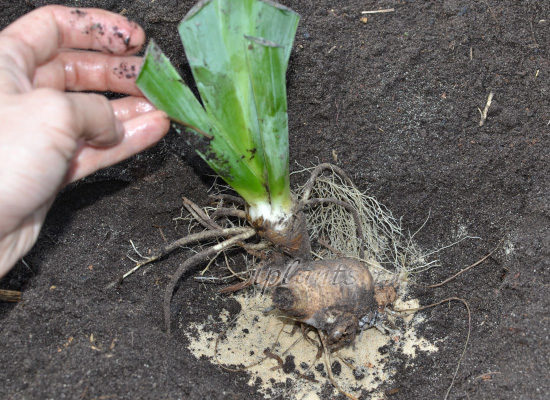
It is possible to plant in open ground not only bulbous, but also rhizome iris:
- We dig holes in the prepared bed, make a small mound in the center and put the main root on it, and distribute the lateral roots to the sides of the hole.
- cover the main root with a sandy layer no more than 2 cm thick, and cover the lateral roots with soil.
Important! When planting rhizome iris, the roots should be almost level with the soil surface.
You may be interested in:
Why irises do not bloom in the garden You must admit that the flowers of irises are so beautiful that they immediately cause admiration! Many amateur flower growers would like to ... Read more ...
Diseases
Diseases for which males show weakness are infections of the fungus and the virus:
mosaic - damage by a virus carried by aphids. The disease can be seen by spots and stripes on the leaves. There is no suitable treatment method, so the infected seedling must be removed immediately, and the plant must be treated with drugs such as Actellik or Confidorm;
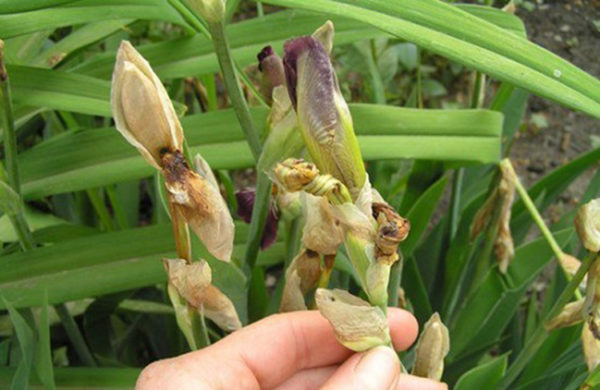
- bacterial rot - is detected on the leaves in the form of brown specks. With such a disease, the affected area must be removed, and the flower must be disinfected with potassium permanganate. If it was not possible to defeat the disease, then the plant will have to be completely destroyed, and the soil should be etched with solutions against bacteria;
- gray rot - the disease can affect both the root and the leaves, in the latter case, the flower is treated with a fungicide, but if the root is affected, then the plant will have to be dug up.
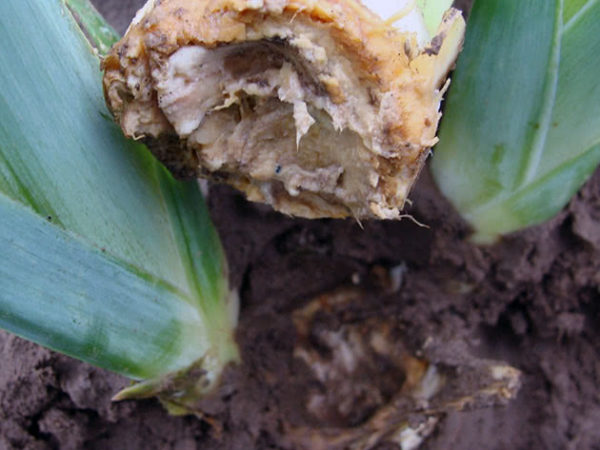
Common causes of diseases include excessive watering, freezing of roots, and a lack of potassium or phosphorus.
Description of the species, popular varieties
Siberian iris (Iris Sibirica - Siberian iris), also called Siberian iris, refers to perennial herbaceous plants. All its varieties are included in the group of non-bearded irises.The view has several obvious advantages:
- frost resistance;
- resistance to diseases and pests;
- ease of care;
- abundant flowering;
- variety of varieties;
- fast growth.
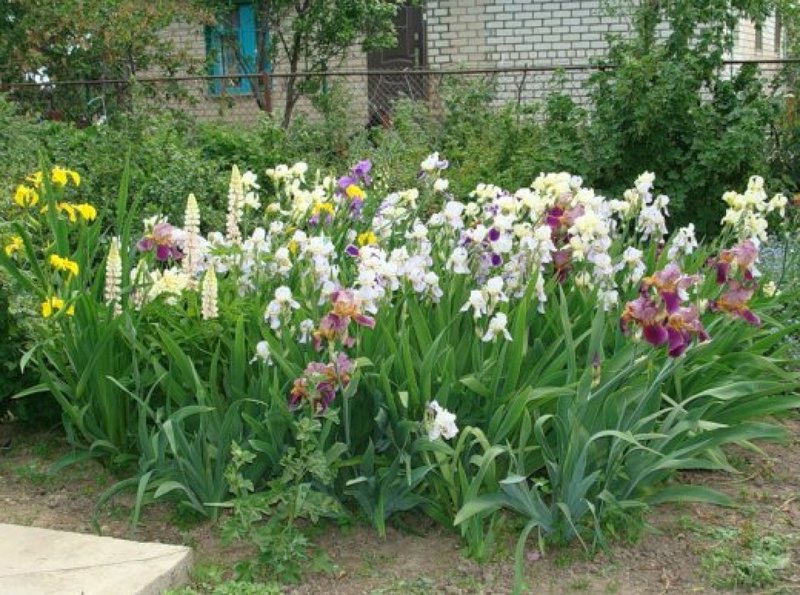
It is quite difficult to give an accurate description of Siberian iris, since different varieties can differ in many characteristics. The height of the plant can vary from 60 to 160 cm. It should be noted that even at a height of more than a meter, the iris does not need additional support, because one of its features is the strength of the stem.
The leaves of the Siberian killer whale are shorter than the stems, their length is 50-80 cm, the width can reach 4 cm.The color of the leaves is green, the structure is linear, the shape is xiphoid. They are directed, as a rule, upward, soft to the touch.
Several buds are formed on one stem. The flower of the classic Siberian iris has 6 petals, with the lower 3 (downward) wider than the upper 3 (upward). Flowers of hybrid varieties may have only narrow or only wide petals.
In nature, these flowers have a blue-blue tint. Hybrid varieties can be blue, purple, purple, yellow, white, pink, orange, and brown. In addition, their petals can be colored in two shades at once.
Different varieties and blooms in different ways. Some bloom at the same time, while others - sequentially. Naturally, the flowering period lasts longer for the latter.
Popular varieties:
- The leader of Altai, also called bell, cockerel and iris, has flowers with deep blue petals. 3-6 buds are formed on one stem, blooming in succession in 2.
- White Swirl has flowers of a white shade with a yellow tint. It features a long flowering period and a large peduncle (diameter up to 15 cm).
- Harpswell Haze has large peduncles, with pronounced dark streaks visible on delicate lilac-blue petals.
- Hohenflug belongs to the tallest varieties of irises (its height can reach 160 cm). The peduncles of the plant are large, the petals are wide, dark blue.
- Hubbard grows up to 60-80 cm in height. The petals of a large peduncle are distinguished by an unusual bright color - the general tone is violet-purple, at the base of the lower petals there are “strokes” of yellow or white.
Incarvillea making: growing and nursing in the open field
Iridarium in garden design
The most exclusive design for a garden with irises is the creation of an iridarium (a mono flower dedicated to one culture). Iridarium is usually not large: its optimal size is approximately equal to the size of a large flower bed.
A whole collection of irises is used for the iridarium - take different varieties, different colors. Flowers are planted in clumps with sufficient gaps between them, as this culture grows strongly. Plants in no case are planted in "rows" - the curtains are arranged asymmetrically, like plants on an alpine hill: somewhere there can be only one curtain, somewhere three at once. Between plantings, a dump of white or gray gravel or pebbles is made. Against the backdrop of a light backfill, you can scatter blue glass pebbles.
As you can see in the photo, the iridarium can be located on the lawn without a clearly defined border, or it can be lined with small stones along the edge. It can also be placed in a large garden module or on a retaining wall.
Cereals can be planted in a pair to flowers, but no more than two or three clumps. Too often, flowers should not be planted, the filling between them should be visible.
The iridarium is decorated with ceramics or forged products - vessels, containers, trellises, bridges - and figurines, beautiful snags, which can be simply picturesquely laid out.
Sometimes one spectacular driftwood is enough, which can also be a bench. The ceramic product can also be one: for example, a large "amphora" made of chamotte, placed between curtains. Chamotte is more suitable for irises than terracotta.
Ceramic balls are also suitable for the iridarium, including those with mosaics - white-blue or mirrored.
Figures and decorations are of great importance, since irises have a certain period of flowering, and then only foliage will be present in the composition.
Iris diseases
Most often, males are susceptible to:
Bacterial rot. The causative agents of this disease hibernate in the soil or on plant debris. Bacterial rot appears when the snow melts, or after flowering. The reason for the appearance is an excess of nitrogen in the soil, as well as dense planting and dampness. First, the base of the leaves becomes soft, and then the entire leaf turns yellow and dries out. In the second stage, bacterial rot affects the entire fan and penetrates the root. A very unpleasant odor is produced. Many growers prefer to destroy the plant than to start a long and not always successful treatment. However, there are cases when the antibiotic Doxycycline was applied to problem areas and the plant revived.
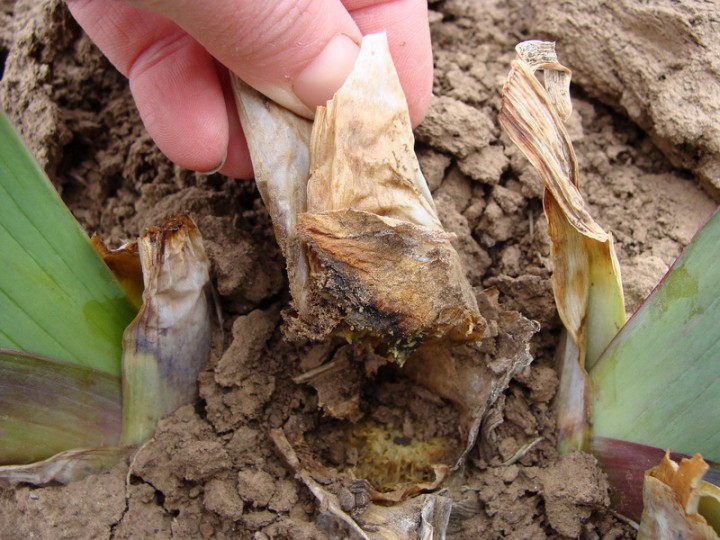
Bacterial rot
- Fusarium. Too much humidity becomes its cause. First, gray spots appear on the leaves, then the rhizome rots and dries out. To avoid infection, you need to follow the rules for caring for males and avoid mechanical damage. The affected plant is eliminated, and the place where it grew is treated with copper oxychloride. For the rest of the plants, Vitaros or Topsin-M are used.
- Leaf spot. Dense plantings, high humidity and lack of phosphorus lead to this disease. The disease mainly manifests itself in the second half of June until the end of July. In the fight against leaf spot, drugs such as Strobi or Ordan are used.

